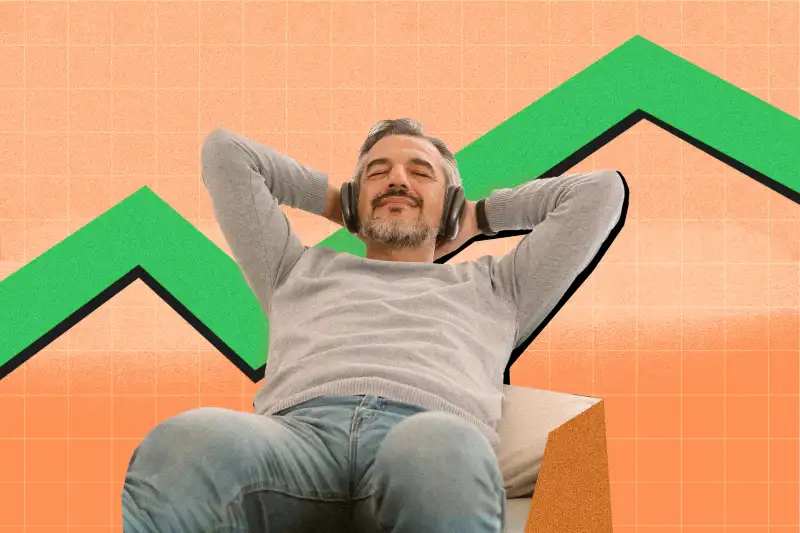Want to Make Money in the Stock Market? Try Doing Nothing
Money is not a client of any investment adviser featured on this page. The information provided on this page is for educational purposes only and is not intended as investment advice. Money does not offer advisory services.

The best way to make money in the stock market may be... doing nothing at all.
That’s the idea behind a recent analysis by Morningstar chief ratings officer Jeffrey Ptak, who created (and analyzed) a model portfolio of S&P 500 companies that a hypothetical investor had been holding — and not touching, except to reinvest dividends — for the last decade.
His discovery? The hands-off method performed just as well, if not better, than the entire index.
The “do nothing” approach to investing isn’t new. It’s the idea that over the long term, setting up your portfolio and letting it grow will leave you better off than making frequent changes, chasing short-term gains or reacting to news headlines.
It’s an especially important lesson for investors right now, when markets are volatile and the economic headlines are especially scary (inflation! Interest rate hikes! An earnings recession!), and it feels to many like the next crash could be right around the corner.
For nervous investors, there’s a lot of temptation to move money out of poorly performing assets and into safer ones — or out of the market entirely. For bolder investors, it can be equally tempting to hunt for bargains when asset prices are falling.
How ‘doing nothing’ performs in the stock market
Luckily, Ptak’s “Do Nothing Portfolio” — which was based on all of the S&P’s holdings as of the end of March 2013 — reveals an easier way to beat the market.
The basket generated a 12.2% return over the 10-year period between 2013 and 2023 — nearly exactly the same as the performance of the entire S&P 500 index over the same time. It was also less volatile. That’s especially surprising, Ptak wrote in a blog post, because his portfolio wasn’t rebalanced or adjusted as the S&P 500 changed. In the index itself, on the other hand, stocks were added and removed.
At the end of the decade, the portfolio also equaled the S&P 500’s performance despite holding a considerable amount of cash, which Ptak added to the basket as companies in the S&P were acquired over the course of the years. He says this cash helped cushion the blow of declines in the market without dragging too much on returns.
Ptak was able to replicate his results over two more 10-year periods. He determined that “the Do Nothing Portfolio would have acquitted itself very well over the full 30-year period, earning a slightly higher return than the S&P 500 with less volatility,” he wrote.
He attributed that success to a few factors.
For one, holding cash in a portfolio (rather than being 100% invested) can insulate against losses and allow for new investments when necessary. Second, resisting the temptation to add new stocks to the basket (or remove them) when they’re added to the index helps maintain that cash flow and reduces the need to agonize over the decision to buy or sell a single firm. Lastly, the portfolio's design allows it to maximize returns from big winners, like Apple, because there's no rebalancing involved.
But, wait, that's not all. There’s one more big lesson for investors from this experiment, according to Ptak: “Leave intuition at the door.” The stock market is notoriously unpredictable, and it’s wrong to assume that you need a complicated strategy to come out ahead.
“Patience and humility beat action and good intentions,” Ptak wrote.
More from Money:
Why Stocks Could Fall Again as Companies Start Reporting Earnings
Should You Invest in CDs Now? Time May Be Running Out to Lock in a High APY
Are Index Funds Actually Bad for Investors?
